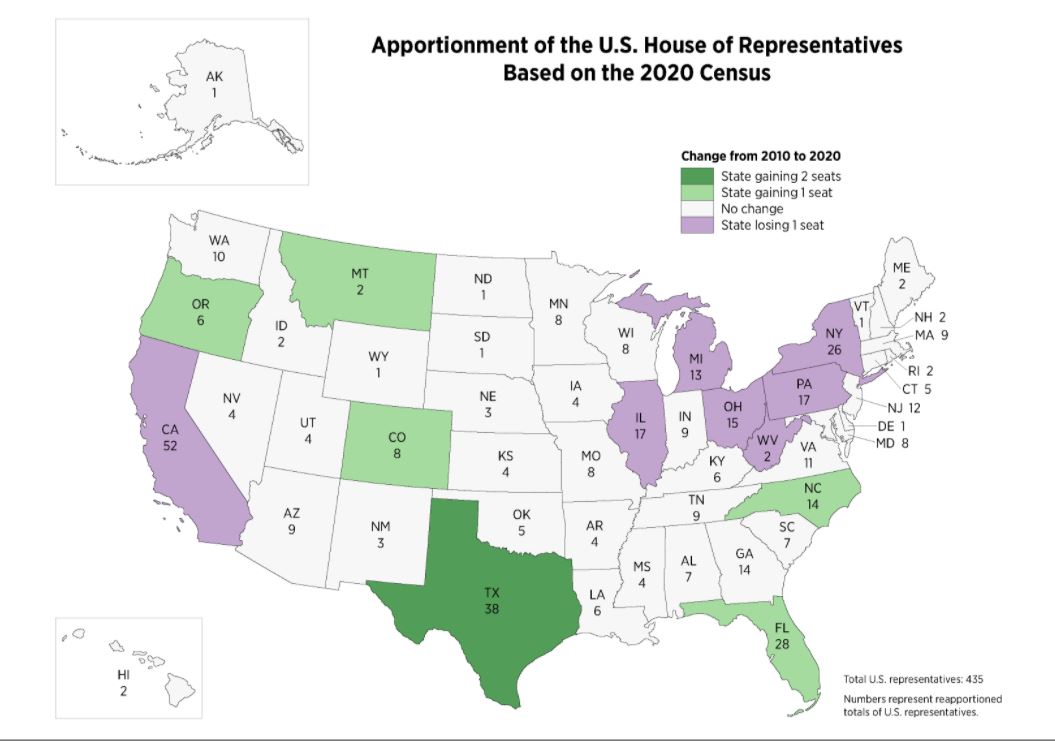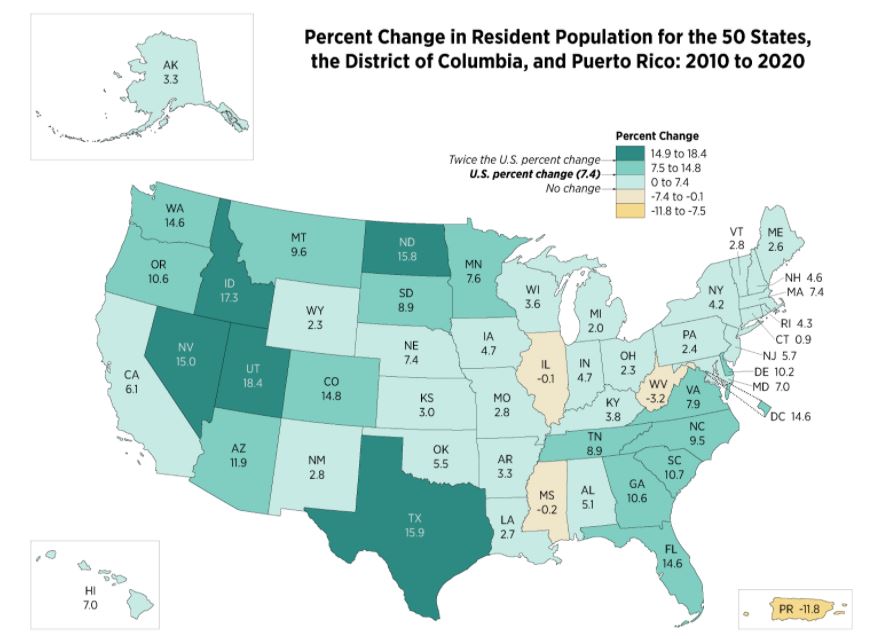
After three of the last four census counts, Nevada picked up a new congressional seat.
But not this time, even though Nevada’s population, now officially at more than 3.1 million, had the nation’s fifth highest growth between 2010 and 2020 on a percentage basis.
The Census Bureau announced state populations according to last year’s census, and five states will have one more congressional race on the ballot in 2022 — Oregon, Montana, Colorado, North Carolina and Florida.
One state, Texas, picked up two extra seats.
California lost a congressional seat, as did a cluster of a half-dozen states in the east and upper midwest – New York, Pennsylvania, West Virginia, Ohio, Michigan and Illinois.
The number of congressional seats will remain the same in all the other states.
Nevada was the fifth fastest growing state between 2010 and 2020, with the population increasing 15 percent. However, that was well below Nevada’s 35 percent growth between 2000 and 2010.

The states with the largest percentage growth were Utah, Idaho, Texas. and North Dakota.
Puerto Rico recorded an 11.8 percent fewer people than in 2010, the nation’s largest population decline.
Overall, there were 331,449,281 people living in the U.S. on April 1, 2020, an increase of 7.4 percent since 2010. That’s the slowest growth in a decade since the 1930s, and the second-slowest growth rate in U.S. history.
Monday’s data release follows months of delays, and for state officials in charge of redrawing district boundaries every 10 years, offers certainty on only the beginning of what they need to complete the once-a-decade redistricting process for both Congress and their state districts.
States also need block-by-block population data in order to draw districts of equal population. That data will be released to states in a less user-friendly format on Aug. 16, with the fuller version to be sent by Sept. 30, according to the Census Bureau, assuring Nevada’s Legislature, which is scheduled to conclude May 31, will have to be called back into a special session to reapportion legislative seats.
Typically, the state-level population data released Monday would have been provided by the end of December, but that process was delayed due to the COVID-19 pandemic, in turn upending state redistricting timelines, particularly for those with constitutionally set deadlines for when officials must approve new district maps.
Our stories may be republished online or in print under Creative Commons license CC BY-NC-ND 4.0. We ask that you edit only for style or to shorten, provide proper attribution and link to our website. AP and Getty images may not be republished. Please see our republishing guidelines for use of any other photos and graphics.



